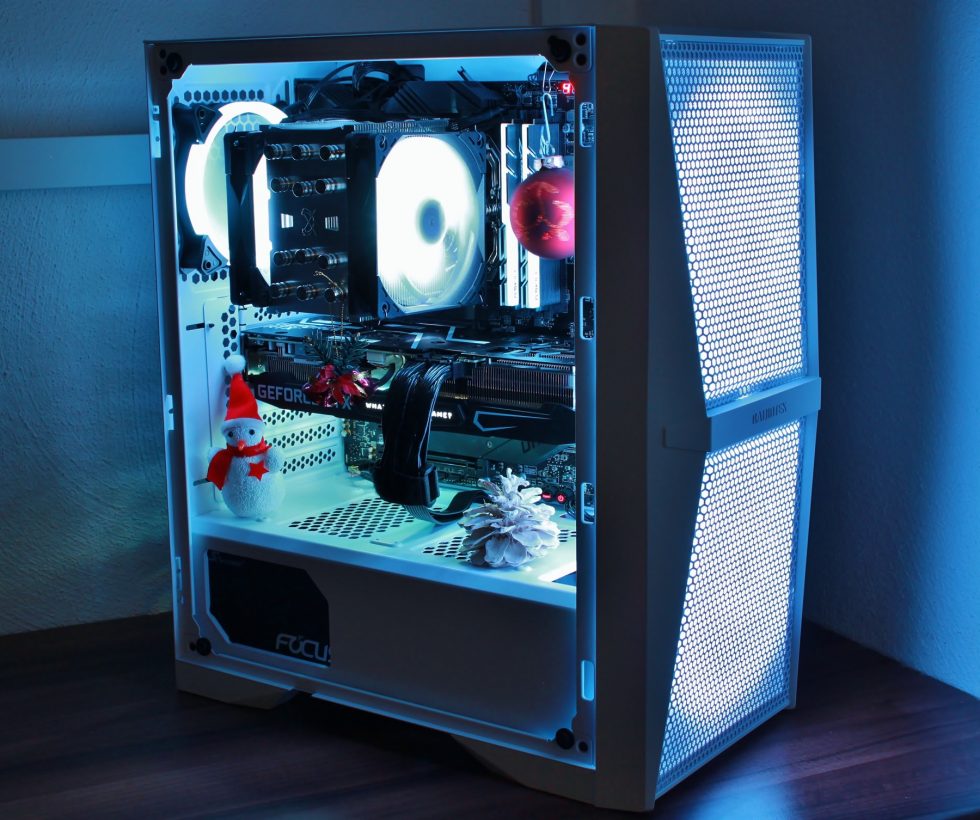Loudness and thermal behaviour
The good news right away: The volume of the installed RGB fans is kept within limits and can be brought to a quite acceptable level with a few clicks. Furthermore, the airflow principle works quite well and there is no heat buildup in the case even with slowly rotating fans. But let’s start from the beginning.
I have the fans all connected directly to the board, where they are of course anything but silent at the stock 100%. On the other hand, they are not turbines and especially the 200mm versions in the front even at full throttle are still quieter than an older blower graphics card or a CPU box cooler from bulldozer times.
The fans are not PWM controlled, so they can only be controlled via DC control (i.e. the applied voltage). When idle, set to about 6V, the fans spin about 400 revolutions. Thus, there is only a lukewarm breeze, but the fans only whisper softly. After about 10 hours of operation, the bearing, which was initially plagued by sporadic grinding noises, was completely quiet. The latter should only be evaluated after a few hours of operation, I recently learned from the boss. Under load, the fans go up to about 700-800 revolutions, blow some air through the case and are still quieter than the graphics card. No, they’re not E-Loops or Noctuas, but the fans are still much quieter than I expected and allow for very quiet operation, easily undercutting even the noise of most water pumps at idle.
Unfortunately, I don’t have a direct comparison regarding the temperatures, since I haven’t used the hardware in question in any other case (air-cooled) so far and the “old” test system is no longer ready for use in that form after a defect. Until I develop a consistent test for this and acquire appropriate hardware, I’m using Cinebench R23 and Red Dead Redemption 2 for testing. Both scenarios were run for 30 minutes while logging temperatures.
After 30 minutes of Cinebench R23, the CPU temperature had settled at 71°C, while the two fans on the Mugen 5 were spinning at about 900 rpm and the case fans at about 600 rpm. For a 5800X at 8x4700MHz a quite acceptable result – without any hearing loss.
During the half hour of Red Dead 2, the graphics card had settled in at ~70°C while the processor hung in the mid 50s. The CPU and system fans were all at around 600 rpm, making the graphics card by far the loudest component of the system with its almost 1900 rpm.
Overall, there couldn’t have been much heat buildup in the case either, as RAM temperatures were even 2-3K lower than in my large case with custom loop.


































6 Antworten
Kommentar
Lade neue Kommentare
Urgestein
Moderator
Urgestein
Urgestein
Urgestein
Urgestein
Alle Kommentare lesen unter igor´sLAB Community →